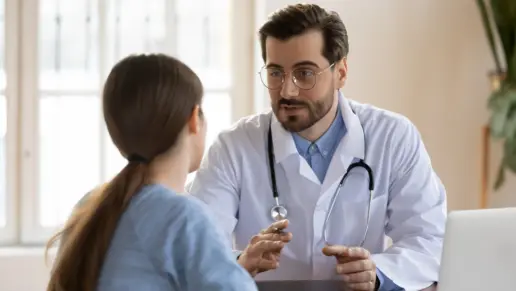A safe consumption site or a safe injection site supports harm reduction which improves the health and safety of people with substance use disorders and the community.
It reduces the spread of diseases and overdoses with harm reduction practices like sterile syringe exchange, safe needle disposal and Naloxone distribution. In the United States, safe consumption or injection sites are only offered in a few locations, like New York City.
However, some other countries see the benefits of such programs and allow their presence in many communities. Some of the supplies and services you can expect at safe consumption sites include fentanyl testing strips, drug checking, sterile syringes, overdose reversal medication, disease testing, counseling and education.
Safe Consumption vs. Overdose Prevention Sites
Safe consumption sites and overdose prevention sites (OPS) are places where someone can go for supervised drug use. They are alike in many ways.
Similarities of Safe Consumption vs. Overdose Prevention Sites
If someone is using drugs alone and they overdose then no one is there to call for help or perform life-saving actions. When someone uses drugs in a place where trained staff are present to supervise their use then those staff can handle adverse reactions and save a life.
Other similarities include the following:
- The staff are trained to recognize the signs of overdose and implement life-saving techniques.
- The staff can recommend and refer someone to various types of treatment.
- Sites are safe, nonjudgmental and open to anyone using drugs.
- Sites allow any type of drug use including snorting, injecting or smoking.
- Sites are exempt from being charged with illegal drug activity temporarily.
- The drugs people use are obtained elsewhere.
- The staff provides sterile syringes and other supplies.
Neither safe consumption sites nor overdose prevention sites provide drugs, illegal or prescription. They do not encourage drug use and selling or trading drugs on the premises is forbidden.
Differences in Safe Consumption vs. Overdose Prevention Sites
There are a few differences between overdose prevention sites and safe consumption sites, but those differences primarily relate to differences in the terminology used to describe their various services.
But their program goals and benefits mirror one another. Both are dedicated to helping break the stigma of addiction while reducing the risk of injury, illness, and overdo associated with substance use.
They also connect people with the right resources when ready for recovery. Further, participants reduce their chances of harm and increase their quality of life while they continue to use drugs.
What Is Harm Reduction?
Harm reduction is an effective way to prevent the negative consequences of substance misuse and can be accessed at safe consumption sites. People who use drugs can do so here under the supervision of trained staff. They are given education, sterile supplies and encouragement to enter recovery treatment through safe consumption or safe injection sites.
The harm reduction definition states it is a method of helping someone who uses drugs or engages in high risk behaviors. It is done by offering nonjudgmental services, education and resources to help them improve their lifestyle despite continuing drug use.
Harm reduction may make people more receptive to recovery and treatment options. It also benefits the community by taking drug activity off the streets.
Harm reduction focuses on preventing negative consequences that may occur with drug use such as overdose or the spread of disease by sharing needles.
Methods of harm reduction include the following:
- Connecting people to treatment resources and education
- Distributing the opioid overdose reversal medicine naloxone to someone who uses drugs or people who may need it to save another person’s life
- Reducing the spread of infectious diseases that may occur through drug use or other high-risk behaviors by providing sterile supplies and education
- Testing and checking drugs for substances like fentanyl and xylazine
- Testing for HIV, hepatitis and other diseases
- Making referrals for vaccinations and other prevention methods
- Providing safer sex kits, wound care supplies, safer smoking kits and sterile water and saline
- Providing nicotine cessation products
Harm reduction is crucial for connecting people who use drugs with helpful resources. At the same time it reduces the negative consequences of high risk behaviors and the stigma associated with drug use and seeking treatment. Increasing the protective factors in a person’s life gives them a higher chance of successful recovery.
Do Safe Consumption and Injection Sites Actually Work?
One study by NYC Health revealed that four OPSs in New York would save 130 lives and $7 million in direct healthcare costs per year. Recent data from the National Institute on Drug Abuse (NIDA) shows that in over 20 years no one has died at a safe consumption site.
This article includes more data on the efficacy of these centers:
- In the New York City safe consumption sites 114 overdoses were reversed in only two months in 2021. The facilities helped 585 people who visited the sites nearly 5,000 times.
- Sydney and Vancouver SCSs report that 38% of participants were significantly more likely to seek treatment.
- Needle exchange programs are one reason the number of people with HIV has dropped by at least 11,000 since 2008.
- Between 2019 and 2021 states that allow SCSs have lower HIV transmission among people who inject drugs.
- One SCS between 2014 and 2019 saw more than 10,000 injections at their site. Out of those 10,000, 33 overdoses occurred and all were successfully treated with naloxone.
Safe consumption sites have been operating internationally for decades and are highly effective. Fortunately, areas of the United States are establishing SCSs and seeing positive results.
Why Aren’t There More Supervised or Safe Injection Sites?
The name supervised injection sites gives some people the wrong idea about what happens at an SCS. Ensuring everyone has the correct definition of a safe consumption site is crucial. It will prevent people from thinking it is a place where injection drug use is encouraged or promoted which is what happens when people receive negative publicity about a site.
It must be known that SCSs are places where there is no judgment but the goal is to prevent adverse health consequences and get people help when they are ready.
The Recovery Research Institute notes one study that asked American participants which SCS they would legalize based on its name: an “Overdose Prevention Site” or a “Safe Consumption Site”.
Results found that 45% of the participants would support an “Overdose Prevention Site” and only 29% would legalize a “Safe Consumption Site.” This proves that language matters when convincing people to support an effective program.
There are a few supervised injection sites in the United States. However, they are still illegal in many areas, influencing people’s perceptions. They may think that since it is illegal, it must be bad. Educating the public on the importance and effectiveness of SCSs is essential.
Where Can I Find Information About Substance Abuse Treatment?
Anyone searching for more information about substance abuse treatment can access online and in person resources. The following resources are available at the federal and state levels:
The Substance Abuse and Mental Health Services Administration (SAMSHA) National Helpline at 1-800-662-HELP (4357).
Rehab.com where you can find a treatment center, learn about levels of care and get answers to questions about insurance.
The National Institute on Drug Abuse to learn more about addiction, types of drugs and research on substance misuse.
At the local levels:
- Narcotics Anonymous: Find an NA group near you with this search tool.
- Your family physician
- Local drug and alcohol treatment center
- Local licensed mental health or substance abuse treatment professional
- Local hospital or medical center
Sometimes the best way to find information about substance abuse treatment is to ask friends, family, coworkers or acquaintances who may have gone through something similar. It’s OK to ask for help finding life saving solutions for yourself or someone you love.
What Are the Treatment Options for Drug Addiction?
Substance abuse treatment often works best on a continuum of care. This means you work your way through multiple programs that vary in intensity to ensure you spend enough time learning the skills necessary for recovery. The highest level of treatment intensity to the lowest level includes the following:
Detoxification
Inpatient detoxification occurs in a hospital setting with access to medical care and supervision around the clock. Withdrawal symptoms can be severe, so doctors will typically administer medications to ease withdrawal symptoms and reduce cravings. Inpatient detox can last between a few days and a couple of weeks.
Outpatient detoxification is another option, particularly for clients experiencing opioid use disorder. In an outpatient (or ambulatory) detox program, you’ll receive medical supervision and support without being hospitalized.
You may be prescribed FDA-medications to ease your withdrawal symptoms and prevent potentially serious complications. For clients who are medically stable, ambulatory detox can enable you to safely withdraw from substances while continuing to work, attend school, and remain in your own home.
Inpatient Rehab
Inpatient rehab is usually a step-down program from inpatient detox where you can continue to receive 24/7 medical care and medication. You also begin meeting with a treatment team to create a recovery plan.
They often include individual, group, family and couples or relationship therapies. In addition you receive peer support through 12 step facilitation programs like Narcotics Anonymous. Inpatient rehab can last from two or three weeks to four months to a year.
Residential Rehab
Residential rehab is less restrictive than inpatient rehab because you live in a home with other program participants. You have responsibilities while staying at home including chores, attending meetings and participating in recovery activities. Residential rehab can last weeks or months and allows you to practice recovery skills in a home like environment.
Partial-Hospitalization Program (PHP)
People who complete an inpatient or residential program often transfer to an intensive outpatient program. Partial hospitalization programs are outpatient treatment services, where you attend five days a week for about five hours daily. You return to your home environment at night where you can spend time with family or friends or work a night job.
In a PHP you attend individual and group therapies to learn relapse prevention skills, receive peer support and feedback and address physical or mental health symptoms that may trigger a relapse. Family therapy and 12 step groups can be integrated into your treatment plan. PHP can last between one and four months depending on your needs.
Intensive Outpatient Program (IOP)
Intensive outpatient programs follow PHPs in the continuum of care and operate three days a week for about three hours. IOP can be a starting point for treatment as long as you have a living environment that supports recovery and can attend all activities.
Outside the program you can work and handle family responsibilities. IOP consists of individual and group therapies where you can apply recovery skills to daily real life situations. IOP can last between four and 16 weeks.
Outpatient Treatment
Outpatient treatment typically consists of a range of services tailored to clients’ unique and evolving needs. Treatment often includes one-on-one psychotherapy between you and a therapist. Once a week you discuss your progress in recovery and evaluate your treatment needs.
This can be a starting point for many people who need substance abuse treatment. A therapist can perform a comprehensive assessment to determine which treatment program will suit you best.
Clients in recovery for alcohol or opioid dependency may also receive medication assisted treatment (MAT) to support their sustained sobriety. These longer-term pharmacotherapies have been shown to reduce cravings, manage physical symptoms, and decrease the risk of relapse and potential overdose.
Aftercare
Before you are discharged from any program at any level you can receive aftercare planning. This is a form of treatment that connects you with community resources to help you maintain a successful recovery.
Aftercare treatment involves meeting with a case manager or therapist to create a list of needs and then connecting you with the agencies that can meet those needs. Examples of aftercare include transportation, education, housing, childcare, psychiatrists, physicians, support groups and job training.
Takeaway
Harm reduction methods at safe consumption sites or safe injection facilities can save your life. If you want to learn more about an SCS, find similar programs in your community or get more answers to the question “What is harm reduction?” then you can contact your local drug and alcohol treatment center.
You can also contact your county’s drug and alcohol or behavioral health department to learn the treatment options available in your area including harm reduction programs.
Featured Facilities Near You
Finding facilities near you…




